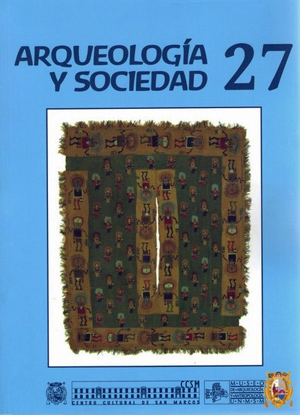NAZCA TROPHY HEAD AND HUMAN SACRIFICE IN LA TIZA
DOI:
https://doi.org/10.15381/arqueolsoc.2014n27.e12195Keywords:
South Coas, Nasca, trophy head, decapitation, human sacrifice, strontium, glass, iconography.Abstract
Nowhere has a larger number of trophy heads been found than on the south coast of Peru and in particular dating to the Nasca culture (AD 1-750). A central debate regarding this practice is whether trophy heads were taken during warfare as trophies, or taken in other contexts and used in rituals such as ceremonies involving fertility and regeneration or in honor of the ancestors. Despite the frequency of trophy head depictions in Nasca art, and their discovery in various archaeological contexts, few examples have been found of decapitated bodies and their mortuary treatment. A decapitated individual was found at the site of La Tiza and sheds more light on the practice of trophy head taking. This Middle Nasca individual was carefully buried with a head jar and placed next to early habitation and burials. Strontium isotopic analysis has revealed that this person was from the local region and not a foreigner. This suggests that decapitation and trophy head taking occurred among local groups and had a strong ritual component.Downloads
Published
Issue
Section
License
Copyright (c) 2014 Christina Conlee, Aldo Noriega

This work is licensed under a Creative Commons Attribution-NonCommercial-ShareAlike 4.0 International License.
THE AUTHORS RETAIN THEIR RIGHTS:
a. The authors retain their trademark and patent rights, and also on any process or procedure described in the article.
b. The authors retain the right to share, copy, distribute, perform and publicly communicate the article published in the Arqueología y Sociedad (for example, place it in an institutional repository or publish it in a book), with an acknowledgment of its initial publication in the Arqueología y Sociedad.
c. The authors retain the right to make a subsequent publication of their work, to use the article or any part of it (for example: a compilation of their works, notes for conferences, thesis, or for a book), provided that they indicate the source. of publication (authors of the work, journal, volume, number and date).






